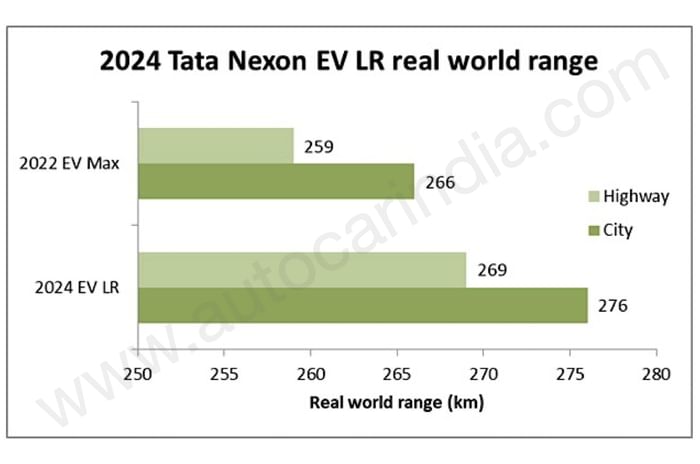Having given it a comprehensive update, what Tata has essentially done is taken the Nexon EV’s proven, winning formula and improved it. And the changes are so substantial, you’ll be hard pressed to believe that it is merely a mid-cycle facelift and not a whole new generation altogether. We put the long range (LR) version through our instrumented real-world range test to quantify its improvements.
- Torque is restricted to 70 percent in Eco mode
- Four regeneration levels to choose from
- New motor is lighter and more efficient than before
2024 Tata Nexon EV LR: real world range tested
The new Nexon EV’s 332.8V battery architecture and 40.5kWh pack remains identical to the outgoing Nexon EV Max, the highlight is its new second-gen electric motor that’s more compact, around 20 kilos lighter, spins faster, and makes 145hp and 215Nm of torque. Gone is the spikey power delivery of the Max as this motor delivers performance in a much smoother and far more linear manner. It also plays a huge role in improving efficiency.
The Nexon EV facelift fares better in terms of real-world range. We achieved an average highway efficiency of 6.73km/kWh and average city efficiency of 6.9km/kWh, resulting in a mixed (city and highway) range of 273 km on a full charge.

Our tests were conducted in Eco mode, where torque is limited to around 70 percent of the total output and top speed is limited to 116kph. For our tests, regen was set to Level 3 in the city (most aggressive) and Level 2 on the highway.
We also charged the car from 20-80 percent on two occasions. On the first, a 30kW DC fast charger was used and took merely 67 minutes. It took 230 minutes (3 hours 50 minutes) using an 11kW AC wallbox charger on the second instance.
Autocar India’s range testing
Before our real-world range test, the battery of our test car was fully charged, and we maintained tyre pressures in accordance with the manufacturer’s recommendation. The car was driven in Mumbai city, and the adjoining state highway, and we maintained certain average speeds. This test was conducted with only one person in the car, and changed the driver after each loop to further neutralise variations in driver patterns. At the end of each cycle, we calculated the range based on the percentage charge consumed. Throughout our test, the climate control was set to 22 degC in full-auto ‘Economy’ setting, and other electricals like the audio system, indicators and ventilated front seats were used when required, just like how a regular user would. We take pride in our testing data, which isn’t merely consistent, but also gives users an accurate indication of what they can expect in the real world.





































